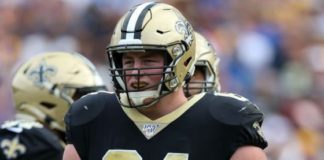If you haven’t pushed the panic button, fingers should be hanging over it. The Raptors have lost six games in a row and eight of their last 10, and it’s been ugly.
In Monday’s 104-101 overtime loss to the Philadelphia 76ers, Pascal Siakam delivered 38 points, 15 rebounds and six assists and it still wasn’t enough. Now, with Fred VanVleet shooting an abysmal 32.4 per cent from deep and 37.9 per cent from the field, and the Lowe Post podcast speculating on what O.G. Anunoby would be worth in a trade, the Raptors are in dire straits.
The last time they lost six in a row (not including the Tampa Tank season, when they ended up drafting Scottie Barnes) was December 2012. It’s bad, but how bad is it really?
Here are five crises the Raptors have faced in franchise history:
LeBronto
The most recent was the LeBronto-era Raptors in the spring of 2018. The nickname started when ESPN announcer Mark Jones went to a commercial break with “we’ll be back to LeBronto after this” at the end of the third quarter of Game 2 during the Eastern Conference semifinals against LeBron James and the Cleveland Cavaliers.
The franchise completely reorganized in the months following Cleveland’s sweep, with the low point coming in Game 3 when James hit a game-winning buzzer beater.
Hit with a very stark realization that the DeMar DeRozan-led Raptors were simply not good enough, team president Masai Ujiri fired Dwane Casey (who won coach of the year soon after) in favour of then-assistant coach Nick Nurse.
Months later, Ujiri traded fan favourite DeRozan to San Antonio for mercurial superstar Kawhi Leonard. The trade was a stunner at the time but proved to be the right one as the Raptors, led by Leonard and Kyle Lowry, won the NBA championship the next year.
First-round wall
One season after Rudy Gay was traded in December 2013, things looked rosy.
DeRozan was coming into his own as the Raptors’ primary scoring option and Lowry had very much settled in as the point guard. The regular season was a success as well. With a new vision and a 49-win total heading into the playoffs, there were at least second-round aspirations.
What the Raptors were met with was Washington’s burgeoning duo of star John Wall and third-year Bradley Beal. The Raptors were crushed 4-0 in the series and many expected heads to roll. It was a gross underperformance by a near-50-win team supposedly with upward mobility.
Without a history of winning in a significant way (the Raptors hadn’t advance past the first round since 2001) and well-documented tension between Lowry and Casey, it was a tinder box that Ujiri decided to keep dry.
Goodbye Rudy
After dropping five games in a row to fall to 6-12 in December 2013, the Raptors looked destined for another losing season after what was supposed to be an invigorating trade for Gay the year prior.
In a last-ditch effort, former Raptors GM Bryan Colangelo dealt for Gay from the Memphis Grizzlies. The experiment failed spectacularly, and Ujiri, in his first off-season as GM, dismantled the team months after trading Andrea Bargnani, who had been drafted first overall in 2006.
The Raptors traded Gay, Quincy Acy and Aaron Gray to Sacramento for Greivis Vásquez, John Salmons, Patrick Patterson and Chuck Hayes. On its face, it was a move to bottom out and rebuild. Instead, Vásquez and Patterson became key pieces for playoff runs. Eventually, Vásquez was traded to Milwaukee for draft picks that became Norman Powell and Anunoby.
This is a losing streak
In the team’s early days, things were tragic. During 1997-98 season, the Raptors posted a franchise-worst 17-game losing streak.
Under GM Isiah Thomas, their regular-season record regressed to 16-66 while the team was sold. It was a comedy of errors in which Thomas sold his nine per cent stake to majority owner Allan Slaight after a failed attempt to take over the team.
Thomas resigned as GM and star point guard Damon Stoudamire immediately asked for a trade and, in February 1998, was shipped to the Portland Trail Blazers for Kenny Anderson, Alvin Williams, Gary Trent, two first-round draft picks and cash.
Anderson refused to play for the Raptors and was flipped for Chauncey Billups, Dee Brown, Roy Rogers and John Thomas. That same month, Maple Leaf Gardens Ltd. purchased 100 per cent of the team.
The Vince Carter Saga
Although Vince Carter is the reason why most Raptors fans began following the team, his time with the franchise was tumultuous at the end.
Dubbed “half-man, half-amazing,” Carter was a multi-time all-star with the Raptors. After signing a six-year deal in 2001, he seemed cemented in Toronto. Months earlier, the Raptors lost a heartbreaker in the second round after Carter missed a potential game-winning jump shot against the Finals-bound 76ers.
What followed was a series of injuries over the next two seasons that kept Carter out for extended periods, alongside poor trades that set the team back. The Raptors struggled under constant media scrutiny, leading to Carter’s trade demand in the 2004-05 season.
As the Raptors dragged their feet, Carter underperformed, clashed with coach Sam Mitchell (at one point Carter allegedly body-slammed Mitchell) and was sidelined with an Achilles injury. Ultimately, Carter was traded to the New Jersey Nets for Alonzo Mourning, Aaron Williams, Eric Williams and two first-round picks. Mourning never played a minute for the Raptors and was bought out of his contract.
JOIN THE CONVERSATION









